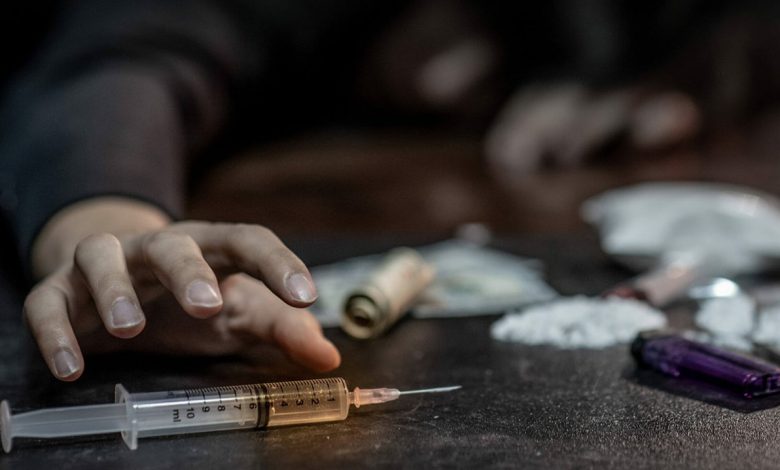Important talk about hashish and its use

We hear this sentence a lot, hashish is not addictive, but is this true?
Science tells us the following: 5% of hashish users are addicted to it, meaning that they consume it in an increasing manner, and they experience withdrawal symptoms when it is absent, and they crave it. This is not a small percentage, especially if we know the numbers who use hashish, but what happens to the other 95% who use hashish?
5% of them hallucinate, that is, they hear voices and see non-existent images, due to using hashish, and this is also dangerous.
In the end, 90% of those who use hashish for long periods, estimated at seven years, for example, and in large quantities, i.e. more than seven hashish cigarettes per day, such people develop major, lasting problems with memory and concentration, and they do not return to their full mental and intellectual brilliance for many years, even after they have finished using it. Also, it is no secret to anyone that in our country, hashish is the introduction to the use of other drugs. It is the gateway to heroin, cocaine, and other things. It is difficult for us, as psychiatrists, to imagine a heroin smoker, for example, who did not enter the hashish stage at the beginning. Hashish is closely related to heroin, many people tend to smoke hashish to fall asleep easily, but what actually happens to some of them is that after becoming addicted to hashish and smoking seven, ten, or fifteen hashish cigarettes to fall asleep, they often start thinking about using stronger drugs such as heroin, tranquilizers, and others.
Likewise, the dealers who promote hashish, a not-so-small segment of them, promote other drugs besides hashish.
In the end, if marijuana is so harmful, why is it allowed in certain states in the United States of America? The story in America is as follows:
First: The Protestant immigrants who established the United States of America, according to the documents of the Protestant immigrants, were using marijuana and hemp since the year 1638, and perhaps before that, but the oldest manuscript archive to date for the immigrants who came to the United States in that period dates back approximately to that period.
However, the use of marijuana by immigrants to the United States continued at least since 1638 AD and continued intensively until 1900 AD, when its use was stopped and completely banned.
Cannabis was banned in 1900, due to the emergence of many studies between 1890 and 1900 that indicated the danger of the substance, and based on that research, cannabis was completely banned, but what happened after that?
What happened is that in the year 1900 and until the year 1979, hashish remained completely prohibited, and in the year 1979, the legal map appeared in which hashish is legally positioned in the United States of America, and this map includes the following concepts:
1-Total Allowance of Hash: i.e. complete permission for hashish, and this is in specific states.
2-Decriminalization of Hash: i.e. removing the criminality from hashish, so that in some states, taking hashish has become a violation and not a crime.
3-Medical Marijuana: Medical marijuana, which is the marijuana given to some cases of hyperactivity and lack of concentration and some cases of cancer.
Complete prohibition of marijuana4- .
I wonder? If marijuana is harmful to that extent, why was it not allowed, for two reasons:
First: Because the mafias are very strong in some American states, the American legislator began to think about allowing marijuana legally to provide it to people instead of people consuming marijuana from the mafias that may mix it with heroin. To avoid this story, marijuana was allowed.
Second: It was noted that selling hashish is a huge source of income for the mafias. Stripping the mafias of the exclusive right to sell hashish deprives the mafias of a major source of income and provides additional income for the state. Here, the state benefits financially and the mafias suffer, but of course the state pays a lot of money to treat people from hashish problems in the end.
Third: Some natural benefits of hashish were discovered, which forced the American legislator to take that into consideration.
So, marijuana was allowed in America not for a medical reason (since marijuana is a substance that is generally harmful to the average person), but rather it was allowed in some states in response to a reality in which the power of the mafia flourishes and the power of the state weakens in some areas.
So, back to what medical marijuana is…
I discovered some of the natural benefits of the substances found inside a marijuana cigarette (and by the way, a marijuana cigarette contains 60 different substances), These benefits are as follows:
For cancer patients, to relieve the pain, it is possible to allow the consumption of some marijuana cigarettes, especially if they are given other painkillers but without achieving the desired benefit.
Also, some patients with hyperactivity and attention deficit disorder, if they are treated with the correct medications, and then those medications are not enough, sometimes the doctor allows the patient with hyperactivity and attention deficit disorder to consume certain amounts of medical marijuana in the United States of America.
This topic opens up broader horizons for questions such as:
How can there be receptors in the human brain for hashish even though the body does not produce hashish?
And what is synthetic hashish (the joker)?
These are two questions that we will address, God willing, in future articles.